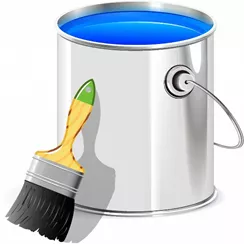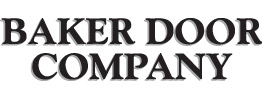
The color of your garage door… is it still appealing to you, in style, or well suited to your home? If not, now is a perfect time to consider updating it and getting a tidy and fresh look. Of course, that is a bit easier said than done if you’ve never refurbished or simply painted your garage door before!
No worries! In this article, we are going to look at non-insulated and insulated metal doors, and how to paint them. If you have a wooden door, it is a good idea to contact your local paint or stain dealer. They can steer you towards the best methods and materials to use for a good outcome.
Getting ready…
First things first, most consumers are unable to purchase oil‑based (alkyd) paints and will typically find the larger chain stores stocking only latex or water‑based paints. Some paint professionals can obtain and use oil-based paints, but as this is a DIY approach, you’ll be using latex paint.
Choose from the top tier brands, SICO, Benjamin Moore, Sherwin Williams, DULUX, Behr, and others, and you shouldn’t have any problems with quality or performance.
Choose the right tools
To get the best results, you will need to have the right tools, and a basic list of “must haves” includes:
- A quality synthetic paintbrush: 4‑inch (10‑cm) in nylon or polyester
- A woven fabric roller: Choose a short-pile (around 3⁄16″ or 5 to 6 cm) model about 5 inches (15 cm) wide
- Paint containers: A tray and lidded canister (you can leave the paint in its original can and pour it into the tray for use)
- Cleaning rags and cloths to tidy spills and drips
- A sheet of sandpaper: Get the fine (220‑grit) sandpaper as this gets into the smallest spaces Masking tape: This is for windows and areas of different color
Determine actual paint needs
Many find that extra cans of paint lying around after a project are a bit of a hassle. Sure, you want a small supply for touch ups, but an extra gallon or more is costly and wasteful. To determine the right amount, follow these tips:
- Start by measuring the door. You will require 1 gallon (4 liters) of paint for a double garage.
- Next, consider the age of the door. For most doors, a coat of primer pays off and lets you get the best adhesion for the top coat.
- Then, consider the finish of the top coat. Ideally, you will use paint with a matte or semi‑gloss finish for the best results.
- NOTE: Doors with a southern exposure typically experience many hours of direct sunlight. Because of that, avoid dark colors that absorb UV rays. This can make the door contract and expand, and cause the metal to warp. However, if you have shade from trees, the risks are greatly reduced.
Do the prep
It would be nice if you could jump right in and start painting, but that’s not going to generate the best results. Instead, use these tips for prep:
- Scrub the surface of the entire door with a trisodium phosphate (TSP) cleaner. This removes oily and greasy residues and helps paint cling better. Then rinse it thoroughly and allow to fully dry.
- Sand the surface of the door, roughening indentations to ensure paint clings everywhere, and don’t use steel wool but instead opt for fine grit paper.
- Wipe it all down with a damp rag or vacuum the door, and repeat the entire process on any PVC window frames or moulding as this is the only way to ensure success.
Apply the base
Good adhesion and long-lasting finishes begin with a base coat of primer. Though you might hear that you only need to apply it if paint has peeled or you can see rust, to be save, always use a coat of primer on the entire door, and allow at least 16 hours for it to dry fully.
Do the top coat
Now you get to the fun part, painting the top coat. Use the roller to make light work, and be sure to have taped any section you don’t want to paint (such as windows or panels that you may be painting in another hue). Apply a second coat for the best results, but be sure the first coat dries fully before you do so.
Should you hire a specialist?
In a word: Yes. Painting can be fun, but a qualified painter always does a better job. Work with companies specialized in painting as they can apply industrial-quality paint with a premium sprayer. They may erect a temporary shelter to keep any air‑born debris or bugs from sticking to the wet paint, and the finish is amazing.
Need to know more!
Just contact us at 717-767-1419 (York) or 717-901-4056 (Mechanicsburg). We are happy to assess your situation and indicate which products fit best within your budget and also the architectural style of your home. We can even send you a quote by email.
Feel free to come in and meet us at our showroom, go online and use our Design Centre or explore our image gallery to get lots of ideas.








Add new comment